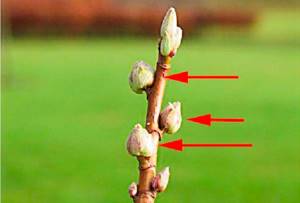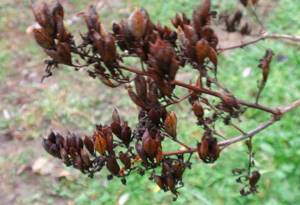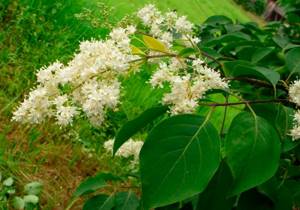A shrub such as lilac is a member of the olive family. According to information taken from various sources, this genus includes from 22 to 36 species. In nature, such species can be found in the mountainous regions of Eurasia. The genus lilac has a type species - the common lilac (Syringa vulgaris). Under natural conditions, such a shrub can be found along the lower reaches of the Danube, on the Balkan Peninsula and in the Southern Carpathians. Lilac is cultivated as an ornamental plant, and it is also used to strengthen and protect slopes that are subject to erosion. In the second half of the 16th century, the Roman ambassador brought lilacs to European countries from Constantinople, and since that time this plant has appeared in the gardens of Europe. The Turks called this shrub “lilac”, and the inhabitants of Germany, Flanders and Austria gave it the name “lilac” or “Turkish viburnum”.
At first, lilac was not in great demand among European gardeners, because it did not bloom long, and the loose inflorescences with small flowers were not highly decorative. But everything changed after the Frenchman V. Lemoine received several dozen varieties of this plant, which were distinguished by lush and long-lasting flowering, as well as beautiful dense inflorescences with the correct shape. He also managed to develop several varieties with double flowers of various colors. Emile Lemoine continued his father's activities, as did his son Henri. Thanks to the Lemoines, 214 varieties of lilac were born. Among the French lilac breeders who paid attention were: Auguste Gouchot, Charles Baltet and Francois Marel. At the same time, in Germany, Wilhelm Pfitzer and Ludwig Speth worked on developing new varieties of lilac. In Holland, at the beginning of the 20th century, new varieties of this shrub were born, and Klaas Kessen, Dirk Evelens Maarse, Jan van Tol and Hugo Coster worked on this, and the Polish breeder Karpov-Lipski also worked in this direction.
At the beginning of the 20th century, lilac became quite popular in North America, and new varieties were born thanks to breeders such as John Dunbar, Gulda Klager, Theodor Havemeyer and other fairly well-known specialists from Canada and the USA. Also, new varieties of lilac were bred in Belarus, Russia, Ukraine and Kazakhstan. Today, there are more than 2,300 varieties of this plant, which differ in color, size and shape of flowers, flowering time, habit and size of bushes. 2/3 of all varieties were bred using common lilac.
Features of lilac
Lilac is a deciduous, multi-stemmed shrub whose height varies from 2 to 8 meters. The diameter of the trunks is about 0.2 meters. The color of the bark is brown-gray or gray. Young trunks are covered with smooth bark, while old ones are covered with fissured bark.
The foliage blooms relatively early, and it remains on the branches until the onset of frost. The length of the opposite leaf plates is about 12 centimeters; as a rule, they are solid, but they can also be pinnately divided. In different species, the leaf shape may differ; for example, it can be heart-shaped, oval, ovoid, or elongated, pointed at the top. The foliage color is dark or pale green. The length of the terminal drooping panicle-shaped inflorescences is about 0.2 m; they contain flowers that can be colored lilac, blue, pink, white, purple or violet. The flowers have a short four-toothed bell-shaped calyx, 2 stamens and a corolla with a four-part flat limb and a long cylindrical tube. Many people are interested in when exactly lilac flowers bloom. This depends on several factors, namely: the species, weather and climatic conditions. Such a shrub can bloom from the last days of April to the first days of June. When lilacs bloom, the garden is filled with a unique, delicate and very pleasant aroma. The fruit is a bivalve capsule containing several winged seeds.
If the plant is provided with the most favorable conditions, its lifespan can be approximately 100 years. Lilac is very easy to care for, it is frost-resistant and is one of the most popular ornamental shrubs along with hydrangea and mock orange (garden jasmine).
Lilac. Features of lilac. Lilac care. Lilac pests.
Planting lilacs in the garden

What time to plant
The best time to plant lilacs in open soil is from mid-July to the first days of September. It is not recommended to plant such a shrub in spring or autumn, since it does not take root well and hardly grows for 1 year. For planting, choose a sunny place with moderately moist soil, saturated with humus, and its acidity should be 5.0–7.0.
When purchasing seedlings, be sure to carefully inspect their root system. You should choose a plant with a well-developed and branched root system. Before planting a seedling, all injured roots that have begun to dry out and are damaged by disease should be cut out; the remaining roots should be shortened to 0.3 m. Injured stems should be removed, and excessively long ones should be shortened.
Landing Features

When planting several seedlings, do not forget to leave 2 to 3 meters (depending on the type and variety) of empty space between them. When preparing a hole for planting, it should be taken into account that it must have steep walls. If the soil fertility is high or average, then the size of the pit will be 0.5x0.5x0.5 meters. If the soil is poor or sandy, then the hole needs to be made 2 times larger, because during planting the seedling it will be necessary to fill it with a nutritious soil mixture, which includes: humus or compost (from 15 to 20 kilograms), wood ash (from 200 up to 300 grams) and superphosphate (from 20 to 30 grams). You need to take 2 times more wood ash if the soil on the site is acidic.
At the bottom of the pit you need to make a good drainage layer; for this you can use crushed stone, expanded clay or broken brick. Then the nutrient mixture is poured into the hole so that a mound is formed. Next, the plant is placed in the center of the hole directly on the mound. After its root system is straightened, the hole must be completely filled with soil mixture. For planted lilacs, the root collar should rise 30–40 mm above the surface of the area. The planted shrub needs to be watered thoroughly. When the liquid is completely absorbed into the soil, its surface will need to be covered with a layer of mulch (peat or humus), the thickness of which should be within 5–7 centimeters.
Planting lilacs - good advice
Preparing lilacs for planting
To properly plant lilacs, you need to prepare in advance. 2-3 weeks before planting, dig deep holes - about 40 cm in diameter, 30-45 cm in depth. In addition, it is important to properly prepare the soil for planting. Each hole is filled with a top layer of fertile soil, to which rotted manure, peat and humus must be added. Next, about 20 kg of organic fertilizer is added. If the soil is acidified, add 2 kg of lime. Sandy soils contain little magnesium, so calcareous tuff is added to such soil in the form of dolomite flour. Mineral fertilizers are also added to each hole:
- superphosphate - 1 kg;
- phosphate rock - 0.3 kg;
- potassium sulfate - 100 g;
- wood ash - 800 g.
After mixing all the fertilizers, it is necessary to apply them to the soil so that the main part falls into the very bottom of the hole.
Caring for lilacs in the garden

Growing lilacs in your garden is very simple, especially since caring for them does not take much time from the gardener. This shrub can grow without your participation, but it will be very good if from the beginning to the middle of the summer period you provide it with systematic watering as the soil dries, and 2.5–3 buckets of water should be poured under 1 bush at a time. During the season, you will need to loosen the surface of the tree trunk circle 3 or 4 times to a depth of 4 to 7 centimeters. Also, do not forget to remove weeds in a timely manner. In August and September, such a plant needs to be watered only when there is a prolonged drought. After 5 or 6 years, the lilac will become a very impressive dense bush.
For the first 2 or 3 years, lilacs are fed only with a small amount of nitrogen. Starting from the second year, ammonium nitrate is added to each bush in an amount of 65 to 80 grams or urea in an amount of 50 to 60 grams. But experienced gardeners recommend feeding lilacs with organic matter; to do this, pour 10–30 liters of slurry under the bush (cow manure should be dissolved in water in a ratio of 5:1). To begin with, make a not very deep groove around the bush, stepping back from the trunks at least 50 cm. You need to pour the nutrient mixture into it.
Once every 2 or 3 years, the plant is fed with phosphorus and potassium; for this, 1 adult bush should take from 35 to 40 grams of double superphosphate and from 30 to 35 grams of potassium nitrate. The granules should be buried 6–8 centimeters into the tree trunk circle, then the plant must be watered without fail. However, lilac responds best to fertilizing with a complex fertilizer consisting of 8 liters of water and 0.2 kilograms of wood ash.
Transfer

Gardeners with considerable experience strongly recommend replanting the shrub after 1 or 2 years from the date of planting. The fact is that such a plant very quickly consumes all the nutrients present in the soil, even despite systematic feeding. In this regard, after 2 years, the soil will no longer be able to provide the lilac with the necessary energy for lush and incredibly spectacular flowering and rapid growth.
Three-year-old bushes are transplanted no earlier than August. Young plants must be replanted immediately after flowering at the end of spring, otherwise they will not be able to take root properly before the first frost. The hole for transplantation must be made in exactly the same way as for planting. Then you should inspect the plant and cut out injured, dried out or unnecessary stems and branches. The shrub is dug up along the projection of the crown perimeter and pulled out of the ground along with a lump of earth. Next, it is placed on thick fabric or oilcloth and moved to a new planting site. The size of the new hole should be such that it can accommodate not only a bush with a lump of earth, but also a sufficiently large amount of fertile soil.
How to transplant an adult lilac
Trimming

Before the bush turns 2 years old, it does not need to be pruned, since the skeletal branches are still in the formation stage at this time. In the third year of lilac life, the formation of its crown should begin; this process will take from 2 to 3 years. Pruning is done in the spring, before sap flow begins and before the buds swell. To do this, select from 5 to 7 beautiful branches equidistant from each other, and remove the remaining ones. Don't forget to cut out all the root growth. Next year you will need to remove about ½ of the flowering stems. The main principle of pruning is that one skeletal branch should have no more than eight healthy buds, while the excess part of the branch must be removed to avoid overloading the bush during flowering. Simultaneously with the formation of the bush, sanitary pruning is also carried out. To do this, you should remove all injured, drying, frost-damaged or disease-damaged branches and shoots, as well as those that are not growing properly.
If desired, lilacs can be shaped into a tree. To do this, you need to choose a seedling with a powerful, straight, vertical branch. It is necessary to shorten it to the height of the trunk, and then from the shoots that will grow, it is necessary to form 5 or 6 skeletal branches, and do not forget to regularly free the stem and the trunk circle from the growth. After you finish forming the standard lilac, you will only need to thin out the crown every year.
How to prune lilacs. Website "Garden World"
Caring for lilacs during flowering

When the weather becomes warm outside in spring, the lilac will begin to bloom, and its very delicate aroma will attract a huge number of beetles. It is necessary to remove cockchafers from bushes manually. During active flowering, approximately 60 percent of all flowering stems will need to be removed. This procedure is called pruning “for a bouquet”; it is necessary to ensure that young stems form more intensively, as well as to increase the number of flower buds laid for the next year. To extend the life of a lilac bouquet, you need to cut it early in the morning, and do not forget to split the lower part of the cut branch. At the end of flowering, cut off all the inflorescences that have begun to fade from the bush.
Pests and diseases of lilac with photo examples
Lilac has a fairly high resistance to diseases and pests. But in some cases, it can develop bacterial necrosis, bacterial rot, powdery mildew or verticillium. Hawk moths, leaf miners, bud or leaf mites, and lilac moths can also settle on the bush.
Bacterial, or nectrium, necrosis

If in August the green foliage changed its color to gray-ashy, and at the same time the young shoots turned brown or brown, this means that the bush is infected with bacterial (nectria) necrosis. For prevention purposes, it is recommended to systematically thin out the crown of the plant to improve ventilation, cut off areas affected by the disease and promptly get rid of pests. If the damage to the bush is significant, then it will need to be dug up and destroyed.
Bacterial rot

Bacterial rot damages the foliage, flowers, stems and buds of the plant. In some cases, wet spots appear on the root surface and grow very quickly. As the disease develops, the foliage loses turgor and dries out, but its fall does not occur immediately; drying and bending of the stems is also observed. In order to cure lilacs, it is necessary to carry out 3 or 4 sprays with copper oxychloride, and the interval between procedures should be 1.5 weeks.
Powdery mildew

Powdery mildew is a fungal disease that can harm both young and old shrubs. A loose whitish-gray coating appears on the surface of the foliage; over time, it thickens and becomes brown. The progression of this disease is observed in hot, dry summers. Treatment of the plant should begin as soon as the first signs of the disease are noticed. The first step is to cut out and destroy all areas affected by the disease, then spray the bush with a fungicide. At the very beginning of the spring period, you should dig up the soil with bleach (100 grams per 1 square meter), while trying not to injure the root system of the shrub.
Verticillium wilt

If you notice that the lilac foliage is curling up, brown or rusty spots appear on its surface, and they gradually dry out and die, then this is a sign of another fungal disease - verticillium wilt. The bush begins to dry out from the top, and the disease spreads extremely quickly. The affected bush should be treated with a solution consisting of 1.5 buckets of water, 100 grams of soda ash and the same amount of laundry soap. Spraying the bush with Abiga-Peak also shows good results. Cut out all infected areas and destroy them along with the fallen leaves.
Lilac Hawkmoth

The Lilac Hawkmoth is a large butterfly with a marbled pattern on its front wings and prefers a nocturnal lifestyle. In the caterpillar stage, this pest reaches 11 centimeters in length. It can be distinguished from other pests by a dense growth similar to a horn located in the back of the body. The hawkmoth caterpillar settles not only on lilacs, but also on meadowsweet, currants, viburnum, ash and grapes. To get rid of such a pest, you will need to treat the bush with a solution of Phthalophos (1%).
Lilac moth

The lilac moth prefers to live on hedges and in light forests. In one season, such a pest can produce 2 generations. Its small caterpillars eat up flowers, buds and buds completely, and all that remains of the leaf plates are the veins, rolled into a tube. The affected bush should be sprayed with Fozalon or Karbofos.
Lilac leaf mite

The lilac leaf mite is a very small insect that feeds on lilac plant sap, sucking it from the lower surface of the foliage. The leaves gradually dry out and change their color to brown. For prevention purposes, you should spray the lilac foliage with a solution of iron or copper sulfate, and also systematically thin out the crown and fertilize the plant with phosphorus-potassium fertilizer. Don’t forget to collect and destroy fallen leaves in autumn.
Lilac bud mite

The lilac bud mite spends its entire life in the buds of the plant. It sucks the juice out of them, and also survives the winter in the kidneys. As a result, the buds are deformed, the stems and foliage growing from them are underdeveloped and weak, there is no flowering and over time the plant may die. For preventive purposes, at the very beginning of the spring period (after the frosts are left behind), it is necessary to remove all fallen leaves and cut off the root shoots, then dig up the soil in the tree trunk circle to the fullest extent with turning the soil, and then the bush is treated with a solution of copper sulfate.
Mining moth

Mining moths can harm lilac foliage. At first, many brown dark spots (min) appear on its surface, and after some time the plates curl into a tube as if from fire. Affected plants do not flower, and after 1 or 2 years they die. To get rid of such moths, it is necessary to generously spray the foliage with a solution of Baktofit or Fitosporin-M, or you can use Bordeaux mixture. For preventive purposes, in the autumn it is mandatory to collect and destroy plant residues, while before frosts and at the very beginning of the spring, it is necessary to deep dig the soil in the tree trunk circle.
Methods of propagating lilacs and how to grow a shrub from cuttings (with video)
Lilac propagation can be carried out in several ways: seeds, cuttings, layering or grafting. Let's say right away that grafting is a technique that is only suitable for experienced gardeners.
As for other methods. For example, this method of propagating lilacs as seeds is multifunctional: firstly, it is suitable for growing various types of shrubs, and secondly, they can be used to grow seedlings suitable for grafting.
However, keep in mind that such plants are slightly slow in growth and need proper care.
By the way, with the help of shoots you can also grow a new generation of this shrub. To do this, you just need to plant the shoots. However, make sure that the mother plant has a healthy root system. This does not apply, for example, to bushes that were bred by grafting.
How to grow lilacs so that the roots are healthy and can later help increase the number of specimens for planting? The answer is simple - you should use green cuttings. They must be summer ones, since winter material will not be able to take root.
Remember that this procedure cannot be carried out with all plant varieties. Those that produce flowers from double buds are considered more or less suitable - for example, “India” or “Montaigne”.
To understand even better how to grow lilacs from cuttings, you should learn more about such a moment as the timing of their separation. Gardening experts say that it is best to carry out vegetative propagation immediately after the shoots stop growing in length. This period coincides with the plant’s vigorous flowering.
In addition, it will be favorable for cuttings if the bush from which the particles are separated for propagation is as young as possible.
You should also take note that it is better to separate the cuttings from those branches that are located in the center of the crown of the bush. They are extracted using a razor or a sharp knife. By the way, if you are not too lazy, you can treat each extracted cutting with a preparation that will stimulate the process of formation of the root system.
Cuttings are most often immersed in a substrate that is breathable and has moderate humidity. Such material could be, for example, a mixture of peat and sand. The cuttings must be placed vertically in the rooting container.
This is done so that the lower buds are completely covered. Don’t forget to spray the plants after this and carefully close the greenhouse. By the way, the film that is used for covering is pulled closer to the cuttings. But then they carefully monitor that the rooting process takes place correctly: for this it is necessary to control that the water in the greenhouse does not stagnate. Therefore, the next spraying of the plant is carried out only after the previous water has dried on the leaves of the cuttings.
Remember that the roots will appear on the cuttings after about ten weeks. But this does not mean that the plant is ready for planting. In fact, cuttings with a root system that has already begun to form are moved from the greenhouse only next spring. And even better - in the fall.
Are you still a little uneasy about taking on such a responsible task? Then let's watch a video of lilac propagation, which will finally help you understand all the nuances:
Lilac propagation
This plant is propagated by seeds only by specialists in nurseries. To propagate varietal lilacs, gardeners use vegetative methods such as layering, grafting and cuttings. If desired, you can purchase grafted seedlings or self-rooted ones obtained from cuttings or layering. The advantages of own-rooted lilacs over grafted ones are that they are less demanding, recover relatively quickly after wintering, and can be easily propagated by vegetative methods. Own-rooted lilac has greater durability.
Lilac propagation by grafting

The following rootstocks are used for varietal lilacs: Hungarian lilac, common lilac and common privet. You can bud a shrub in the summer with a dormant bud, and in the spring an awakening bud is used for this. It is recommended to vaccinate in the spring, since at this time more than 80 percent of the cuttings take root. In order to carry out spring grafting, cuttings are prepared in February or March, then they are wrapped in a paper sheet and placed on a refrigerator shelf (temperature 0–4 degrees). To take cuttings, mature annual shoots covered with browned bark are used.
The preparation of the rootstock should also be done in advance. To do this, you need to cut the side stems to a height of 15 to 20 centimeters and cut out all the root shoots. The root collar of the rootstock should not be thinner than a pencil, and the bark should be well separated from the wood; for this, the plant must be provided with systematic abundant watering 7 days before grafting. On the day of grafting, first, all soil is removed from the root collar of the rootstock. Next, take a clean, damp cloth and wipe the grafting site with it. Split the rootstock stump in the center to a depth of 30 mm using a budding knife. The lower end of the scion cutting must be cleaned on both sides to a height of 30 mm, and the result should be a wedge. It is necessary to insert a scion wedge into the split of the rootstock so that the area cleared of bark is completely immersed in the split. After this, the grafting site must be wrapped with tape, with its sticky surface facing outward. Next, the damage and the places from which the buds were cut are treated, using garden varnish. Then a plastic bag should be put on the grafted cuttings, and it should be fixed just below the grafting site, this will help create a greenhouse effect. The package should be removed only after swelling of the buds is noticed on the scion.
To carry out this procedure, choose a dry sunny day. The vaccination must be carried out from 16 to 20 pm or from 5 to 10 am.
Lilac propagation by layering

In spring, you need to find a young stem that has begun to become lignified. It should be tied with copper wire at the base and in another place, retreating from the first 0.8 m, while trying to ensure that the bark remains uninjured. Then the shoot is placed in a previously prepared groove, the depth of which is from 15 to 20 mm. It is fixed in this position using pins, so that only the upper part remains on the surface. After some time, young stems will begin to grow upward from the layering; after their height is 15–17 centimeters, these shoots must be covered with nutritious soil, and they are covered with earth at least half the height. In the summer, provide the layering with systematic watering and weeding, and add soil under the stems that have begun to grow 1 or 2 times during the season. After it gets colder outside, you should cut off the cuttings in the places where the constriction is constricted. It will need to be cut so that each part has a shoot with roots. Such a division can be planted on a school bed for growing, and if desired, it can be planted in open soil in a permanent place. Young bushes planted in open ground need shelter for the winter.
Lilac propagation by cuttings

Cuttings of this shrub are quite difficult to root, and in order for this procedure to end successfully, two important rules must be taken into account:
- Harvesting cuttings must begin as soon as the plant fades or do it during flowering.
- Cuttings are cut in the morning from young bushes. For this purpose, non-lignified stems located inside the crown, which have an average thickness, short internodes and 2 to 3 nodes, are suitable.
The cut at the top is made at a right angle, and at the bottom - obliquely. The leaf plates located in the lower part of the cutting must be torn off, and those in the upper part must be shortened by ½ part. Next, an oblique cut of the cuttings is immersed in a solution of a root growth stimulating agent. He must stay there for at least 16 hours.
To ensure that the cuttings take root well, prepare a cutting box or greenhouse. For rooting, it is recommended to use a substrate consisting of peat and sand (1:1). If desired, sand is partially replaced with perlite. First, the container needs to be sterilized, then a twenty-centimeter thick layer of soil is poured into it, which must first be treated with Maxim or Fundazol. On top of this soil, a five-centimeter thick layer should be placed, consisting of calcined river sand. To begin, the tips of the cuttings should be rinsed using clean water to remove any remaining root material. Then the cuttings are buried in a layer of sand and such a distance is maintained between them so that the foliage of one plant does not touch the leaves of the neighboring one. The planted cuttings need to be moistened with a spray bottle, and then they are covered with a lid, which must be transparent. If an ordinary box or container is used for cuttings, then to cover the cuttings, take a 5 liter plastic bottle and cut off the neck. Turn this container over and cover the cutting with it. Cuttings for rooting are removed in partial shade. Please note that the sand in the container should not dry out. Systematically humidify the air under the cover using a spray bottle, since the percentage of air humidity there should be equal to 100. To prevent fungal diseases, you should spray the cuttings with a weak solution of potassium manganese once every 7 days.
Rooting of cuttings can take from 40 to 60 days. Then they will need to be ventilated every day in the evening, after some time the shelter must be removed for good. When roots appear in the summer, the cuttings will need to be planted in a well-lit area, and the soil should be slightly acidic and light. For wintering they need to be covered with spruce branches. If the roots appear at the end of summer or autumn, then the plants are left for the winter at the rooting site; they can be planted in a permanent place only in the spring. Shrubs grown from cuttings begin to bloom in the 5th year.
How to propagate lilacs from cuttings
Lilac propagation by seeds

If you have a great desire to grow lilacs from seeds, then, of course, you can try. Seeds are collected in autumn in rainy weather. The collected boxes should be dried at room temperature for several days. The extracted seeds should be stratified. The seeds are combined with moistened sand (1:3), the mixture is poured into a container or bag and put in the refrigerator on the vegetable shelf. She must stay there for 8 weeks. It should be noted that the sand should always be slightly damp.
The seeds are sown in the second decade of March and buried 1.5 cm into the soil. For sowing, garden soil is used, which must be fried or steamed. The surface of the substrate must be moistened with a spray bottle. The first seedlings may appear in 2–12 weeks. Half a month after the appearance of the seedlings, they must be planted, keeping a distance of 40 mm between the plants. Once the weather is warm outside, the seedlings can be transplanted into open ground.
Seeds can be sown before winter in slightly frozen soil. In this case, there is no need to pre-stratify the seeds. In spring, seedlings will appear that need to be picked and sent for growing.
How to plant a lilac seedling correctly
Skilled gardeners claim that planting this shrub is a simple matter. In addition, if everything is done correctly, the plant feels very comfortable in any garden. However, you need to know exactly how to plant lilacs of different sizes and ages: for example, older bushes are more vulnerable, but seedlings practically do not require any special treatment or close attention.
Let's first figure out when and how to plant a lilac seedling so that it will delight you in the near future. It is best to plant and care for lilacs in the Moscow region in the second half of August, covering the whole of September. Experts recommend this particular time period, since the shrub still has a certain number of warm days left in order for the root system to take root safely.
But what should you do if the favorable period for planting lilacs in the ground has been missed? There’s definitely no need to panic, but we recommend taking a few things into account.
- Let’s imagine that you hesitate a little and will have to finish planting shrubs on days when the temperature rapidly drops to 0°C. Advice for such situations: planting material should be carefully buried in an inclined position in an area protected from northern winds. Of course, you postpone the planting procedure itself until the spring. Please note that this trick will only work with young seedlings, but adult specimens will have to be left until the beginning of autumn.
- If frosts have not yet arrived, but they are about to come to you, you should take the following steps: firstly, the soil under the bush must be sprinkled with either dry leaves or peat. You certainly do this only after you have watered the plant. This move, which experts call mulching, will help save lilacs from the coming cold weather. But be extremely careful that this same move does not cause lilac disease - more specifically, its rotting if sudden warming occurs. Therefore, sprinkle the bush so that the layer of mulch is not too close to the trunks.
- And remember one more important thing: this shrub in temperate latitudes grows quite early. Therefore, planting should be done before the buds begin to swell.
To know how to properly plant and care for lilacs in the spring, see the photo, which shows one of the key points - regular watering of the plant:
- In addition, you need to ensure that water does not stagnate in the soil. And for this you will have to loosen the area under the bush. Experienced gardeners also advise treating spring seedlings with stimulants for better root formation. This is done in cases where the appearance of the plant indicates that the shrub is withering.
- Planting and caring for lilacs in open ground is a little complicated: the fact is that the next summer after planting the bush, symptoms such as poor flowering and a small number of new shoots may appear. In such cases, the plant needs an eye and an eye - protection from sunlight and gusts of wind, regular watering and spraying.
When we figured out what time is best to plant lilacs, let's turn our attention to its territorial placement. Gardening experts say that the ideal conditions for this mission are:
- firstly, flat areas or areas with a gentle slope but reliable drainage;
- It is also important that groundwater is not very close to the surface;
- in addition, keep in mind that the soil must be fertile and moist;
- a sufficient amount of sunlight during the day is a must;
- and, of course, northern winds should not blow through the bushes.
Be sure to look at the photo of a lilac planted correctly: such a lush color is possible only when the plant grows in well-lit places.
Otherwise, instead of delighting you with an abundance of flowers, the bush will grow and stretch.
But that's not so bad! If you choose unsuitable soil for a bush, you will definitely destroy it. Remember that lilacs can grow in poor soils, but in acidic ones they have great difficulty. The situation can be corrected if you try to constantly maintain low acidity by, for example, adding lime or ash to the ground. But in areas where water constantly stagnates, the plant will not be able to develop. Wetlands are hell for lilacs.
Types and varieties of lilacs with photos and names
There are approximately 30 types of lilac, most of which can be found in gardens and parks. Below is a description of the most popular types and varieties of such shrubs.
Amur lilac (Syringa amurensis)

This shade-loving hygrophyte is found in the deciduous forests of the Far East and northeastern China. This species needs well-moistened soil. It is represented by a multi-stemmed tree that has a spreading, lush crown. The height of the plant is about 20 meters. This species is cultivated as a shrub, the height of which does not exceed 10 meters. The shape of the foliage of this plant is similar to the leaf blades of common lilac. When the leaves just bloom, they have a purple-green color; in the summer, their front surface is dark green, and the underside is paler. In autumn, the color of the foliage changes to yellow-orange or purple. The length of the strong panicle-shaped inflorescences is about 25 centimeters, they consist of small white or cream flowers with a honey smell. This plant is frost-resistant and does not need shelter for the winter. It is grown both solo and in group plantings, and this shrub is also suitable for creating a hedge. Cultivated since 1855
Hungarian lilac (Syringa josikaea)

This species is native to Hungary, the Carpathians and the countries of the former Yugoslavia. The height of the bush is about 7 meters. Branched dense stems point upward. The glossy dark green leaf blades, broadly elliptical in shape, reach a length of 12 centimeters and have a ciliated edge. The lower surface of the leaf blades is greenish-gray; the central vein sometimes has pubescence. Rare narrow paniculate inflorescences are divided into tiers. They consist of small lilac flowers with a slight odor. This plant is unpretentious, resistant to city conditions, and is widely used for creating group and single plantings. Cultivated since 1830. Popular garden forms:
- Pale . The color of the flowers is light purple.
- Red . The inflorescences are purple-red.
Meyer lilac (Syringa meyeri)

The compact plant reaches a height of only 150 cm. The length of the small leaf plates is from 20 to 40 mm, their shape is elliptical, they taper towards the apex, and have a ciliated edge. The front surface of the foliage is bare dark green, while the underside is paler and has pubescence along the veins. The length of the erect inflorescences is 3–10 centimeters, they consist of fragrant pale flowers of pink-lilac color. The species is frost-resistant.
Persian lilac (Syringa x persica)

This hybrid was obtained by crossing finely cut lilac and Afghan lilac. The height of the bush is about 3 meters. The length of the dense thin leaves is about 7.5 centimeters, they are pointed and lanceolate in shape. Wide loose panicle-shaped inflorescences consist of fragrant pale lilac flowers, the diameter of which is 20 mm. Cultivated since 1640. Popular forms:
- White lilac. The color of the flowers is white.
- Red lilac with red flowers.
- Dissected foliage. This dwarf Persian lilac has spreading branches and small, pinnately lobed, lacy leaf blades.
Chinese lilac (Syringa x chinensis)

This hybrid was obtained by crossing Persian lilac and common lilac. This species was obtained in France in 1777. The height of the bush is about 5 meters. The length of the ovate-lanceolate pointed leaf plates is about 10 centimeters. The length of the wide-pyramidal drooping panicle-shaped inflorescences is approximately 10 centimeters, they consist of very fragrant flowers, the diameter of which is 1.8 cm. In buds, the flowers are colored a rich purple color, and when they bloom they are lilac-red. Popular shapes:
- Double. The color of the double flowers is purple.
- Pale purple.
- Dark purple. This form is the most spectacular of all related to Chinese lilac.
Hyacinth lilac (Syringa x hyacinthiflora)

This hybrid is the result of the work of V. Lemoine. It is created using common lilac and broadleaf lilac. The leaf blades have a sharp tip and a broadly ovate or heart-shaped shape. In autumn, their dark green color changes to purple-brown. The flowers are similar to those of common lilac, but the inflorescences are less dense and smaller. Cultivated since 1899. The terry form is most effective; there are several other popular forms:

- Esther Staley . The color of the buds is red-violet, and the fragrant flowers are a rich red-violet. The diameter of the flowers is about 20 mm, their petals bend back. The length of the inflorescences is about 16 centimeters.
- Churchill . The color of the buds is violet-red, and the blossoming fragrant flowers are lilac-silver with a pinkish tint.
- People's Glory . Dense inflorescences consist of large (diameter 35 mm) simple flowers of purple color.
Common lilac has been cultivated since 1583; it has a large number of varieties created by both domestic and foreign breeders. For example:

- Red Moscow . The color of the buds is purple-violet, and the fragrant flowers are dark purple. They reach 20 mm in diameter and have yellow stamens.
- Violet . Cultivated since 1916. The buds are dark purple, and the double and semi-double large (diameter about 30 mm) flowers are pale purple. They have a faint odor.
- Primrose . The buds are yellow-green and the flowers are pale yellow.
- Belicent . The bush is straight and tall. The length of the fragrant openwork pink-coral inflorescences is about 0.3 m. The shape of the large, slightly corrugated leaf plates is oval.
In addition to these varieties of garden lilac, the following are popular: Belle de Nancy, Monique Lemoine, Amethyst, Ami Schott, Vesuvius, Vestal, Galina Ulanova, Joan of Arc, Cavour, Soviet Arctic, Defenders of Brest, Captain Balte, Katerina Havemeyer, Congo, Leonid Leonov, Madame Charles Suchet, Madame Casimir Perrier, Dream, Miss Ellen Wilmott, Montaigne, Nadezhda, Lights of Donbass, Memory of Kolesnikov, Sensation, Charles Joly, Celia, etc.
Gardeners also grow the following types: Beijing lilac, drooping, Japanese, Preston, Juliana, Komarova, Yunnan, fine-haired, shaggy, Zvegintsev, Nansen, Henry, Wolf and velvety.
Varieties of lilac. Lilac Festival in Novoe Bortsovo
Diseases and pests of lilac: photos and control methods
Lilac diseases and pests can destroy your beautifully flowering and fragrant shrubs in no time. You can fight them, and we will now tell you how to do it.
You see in the photo examples of lilac disease, which are considered very common:
Yellowed and curled leaves are evidence that the shrub lacks either nutrients or sufficient watering. The lack of elements such as magnesium, iron and zinc is most likely caused by the poor soil in which the bush grows, or due to the fact that it was planted in alkaline soil. These lilac diseases and the fight against them suggest that you will have to get an acidity indicator at your nearest store, which will help establish the level of “neutrality” of the soil and adjust it (required pH 7).
In addition, let us also feed the plant: for this we take a solution of microelements or add wood ash or a little potassium sulfate to the root.
Unfortunately, if your bushes are infected with viruses, you may not immediately realize it. Indeed, with these types of diseases, the symptoms in plants are similar - yellowing and curling of the foliage. The only thing that can tell you is which lilac disease needs to be treated and the extent of the affected area. Most often, traces of viruses appear first on only one branch.
And now about the unpleasant stuff . It must be said right away that it is rarely possible to save a plant from a viral disease. The fact is that the virus spreads very quickly throughout the bush system. You can try to remove only the affected shoot first, but this will not guarantee the recovery of the entire bush.
You can see an example of a lilac disease and an attempt to combat it in the photo below: as you understand, it was not possible to achieve a successful resolution of the situation:
What then do experienced gardeners suggest doing in such cases? It’s quite simple – to prevent viral diseases. This is possible when you ensure that the soil under the plant is healthy from the very beginning. Therefore, purchase planting material in special stores.
In addition, try to ensure that weeds are removed in a timely manner and tiny bushes, which are most often where viruses are concentrated, are cut off. Naturally, for carrying out all kinds of procedures - cutting, planting - use only sterile instruments. And, as we already said, do not injure the bushes.
We cannot remain silent about lilac pests, which also cause certain troubles even for experienced gardeners. These parasites are ticks, moths, and scale insects. In our area, it is moths that cause the most damage.
But no matter how terrible the lilac pests are, they can and should be combated: to do this, you should use substances such as chlorophos - in particular, to destroy the moth, phthalophos - ideal for combating hawkmoth, or fozalon - a remedy which is used to treat bushes if moths have settled on them.











